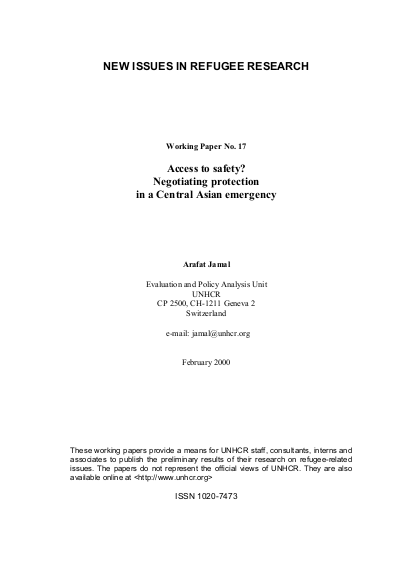
The paper is structured around the three phases of the emergency: escape, asylum and repatriation. Each section summarizes the events related to the relevant phase, and then analyses a set of issues raised by those events and the responses to them. The first, escape, focuses on the protection needs of the Afghans, and the role of access — access by the refugees to refuge, and by the international community to the refugees. The second, asylum, concentrates on the threats to the refugees’ protection, host country concerns and UNHCR’s strategy for minimizing the threats — its attempt to negotiate protection for this group. Repatriation, the third section, reflects upon the limits of outsiders in the face of ‘spontaneous’ repatriation. It looks at the international norms surrounding repatriation, voluntary and involuntary, and suggests that the scope for action may be restricted in such situations. Finally, the conclusion recapitulates the arguments made in the paper, and ends with a brief look at some of the operation’s implications.
